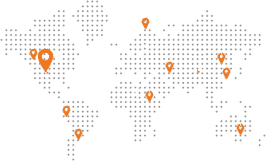23rd International Conference on Ground Control in Mining, Morgantown, West Virginia, August 3–5, 2004
Authors: L. J. Gilbride and M. P. Hardy (AAI)
Western U.S. longwall operators face increasing challenges with optimizing ground control and productivity as mines reach greater depths and coal bursting hazards increase. Some western U.S. mines, many known to be bump-prone, achieved a successful balance between ground control and productivity by transitioning to side-by-side longwall panel mining combined with a yield pillar gateroad system. With this design, development footages could be minimized and pillar bumping averted by controlled yielding at moderate depths, generally in the range of 450 to 600 m. Over the past four decades, the yield pillar system has won wide acceptance among western mines facing pillar bursting hazards, particularly those in the Wasatch Plateau and Book Cliff coal fields of central Utah. However, recent attempts among the deepest Utah operators to mine side-by-side panels with yield pillars at depths in excess of 600 m have been met with mixed success and, in some circumstances, with serious difficulty. Challenges include violent face bursting and excessive tailgate convergence outby the face, which can be crippling to ventilation. The use of interpanel barriers, i.e. barriers left between longwall panels, offers one possible solution to mining under deep cover with bump-prone geology. Interpanel barriers have already been adopted by Utah’s deepest longwall mine, and others are considering their use. The geomechanical implications of mining with and without interpanel barriers, and the competing tradeoffs between ground control and ventilation are discussed.
Downloadable PDF: Interpanel Barriers for Deep Western US Longwall Mining



